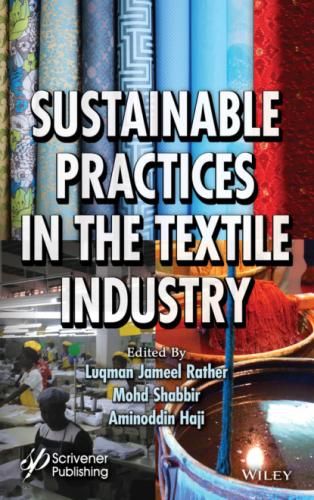Table of Contents
1 Cover
4 Preface
5 Part 1: SUSTAINABLE DYE EXTRACTION AND DYEING TECHNIQUES 1 Extraction and Application of Natural Dyes 1.1 Introduction 1.2 What are Natural Dyes? 1.3 Why Natural Dyes? 1.4 What are Synthetic Dyes? 1.5 Sources of Natural Dyes 1.6 Types of Natural Dyes 1.7 Natural Dyes Need Fixing Agent (Mordants) for Bonding 1.8 Fibers/Fabrics Used for Natural Dyeing 1.9 Extraction of Natural Dyes 1.10 Dyeing Process 1.11 Evaluation of the Dyed Fabric 1.12 Some Special Characteristics of Naturally Dyed Fabric 1.13 Conclusion Acknowledgement References 2 Recent Advances in Non-Aqueous Dyeing Systems 2.1 Introduction 2.2 Supercritical Fluid Dyeing System 2.3 Reverse Micelle Systems 2.4 Solvent Dyeing 2.5 Silicone Non-Aqueous Dyeing 2.6 Conclusion References 3 Structural Coloration of Textile Materials 3.1 Introduction 3.2 Thin-Film Interference References 4 Enzymatic Wet Processing 4.1 Introduction 4.2 Enzymes 4.3 Function of Enzymes 4.4 Classification of Enzymes 4.5 Αn-Amylase Enzyme for Desizing 4.6 Pectinase Enzyme for Scouring 4.7 Protease Enzyme for Wool Anti-Felting 4.8 Cellulase Enzyme for Biopolishing and Biostoning 4.9 Hairiness Removal Mechanism 4.10 Enzyme Decolorization of Textile Effluent 4.11 Enzymes for Increasing Dyeability of Different Fibers 4.12 Conclusion References
6 Part 2: SUSTAINABLE FUNCTIONAL FINISHING OF VARIOUS TEXTILE MATERIALS 5 Coating Textiles: Towards Sustainable Processes 5.1 Introduction 5.2 Most Used Polymers for Coating Textiles 5.3 Traditional Coating Methods 5.4 Environmental Friendly Polymers 5.5 Sustainable Coating Technologies 5.6 Conclusion References 6 A Review on Hydrophobicity and Fabricating Hydrophobic Surfaces on the Textiles 6.1 Introduction 6.2 Self-Cleaning Surfaces 6.3 Applications of Hydrophobic Surfaces 6.4 Basic Theories: Modeling of Contact Angle 6.5 Techniques to Make Super-Hydrophobic Surfaces 6.6 Methods of Applying Hydrophobic Coating on Textiles 6.7 Contact Angles (CA) Measurement 6.8 Research Records on Hydrophobic Surface Production 6.9 Conclusion References 7 UV Protection: Historical Perspectives and State-of-the-Art Achievements 7.1 Introduction 7.2 Fundamentals Regarding UV Protection of Textile Fabrics 7.3 UV Stabilizers Beginnings and Initial Development 7.4 Conclusion
